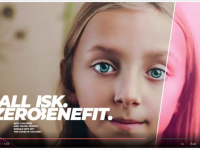With many countries rapidly reaching the point where most adults have been vaccinated against covid, attention has been turning to the issue of whether or not children should also be vaccinated. This has been accompanied by an increase in claims in the media that covid is in fact more dangerous to children than was previously thought.
I think most people intuitively agree that children shouldn’t be vaccinated unless the benefits to them outweigh the risks. That is probably the reason for the sudden up-tick in the claims of danger. While you might convince young adults to vaccinate themselves “for the greater good”, even though there is almost certainly no benefit to them personally, you will have a harder time convincing parents to let their children be vaccinated if there is no actual benefit to the children.
That is especially true in light of the mounting evidence that the covid vaccines can cause harm, such as findings from the CDC that some of the vaccines cause an increased risk of myocarditis (inflammation of the heart muscle), particularly in boys and young men. This comes on the heels of earlier findings that some of the vaccines increase the risk of serious blood clotting disorders, particularly in young women. Let’s remember, the vaccines were invented only a little over a year ago. It is possible (in fact quite likely) that there will be new revelations of harm going forward. So if you want to convince parents to let their children be vaccinated in spite of this increasing evidence of harm, then you need to convince them that covid is in fact a real danger to their children.
With that in mind, let’s look in to the claim that covid is a danger to children. I’m going to be using mainly Swedish statistics, since those are the ones I’m most familiar with, and since Sweden is better than virtually every other country in the world at producing reliable statistics. In Sweden, nine children (i.e. people under the age of twenty) have so far died of covid, according to official statistics. In total, 13,913 people have died of covid in Sweden, which means that people aged 20 or over constitute the remaining 13,904 covid deaths.
There are currently around 2,414,000 children in Sweden (four of which are mine). If we divide the number of deaths by the number of children, then we find that the risk of having died of covid for a Swedish child is 0.00037% (one in 268,000). That is after a full year and a half of the pandemic. To put that in some perspective, in 2020, 15 children in Sweden died in traffic accidents. So the risk of a child in Sweden dying of covid during the pandemic has been around half the risk of that child dying in a traffic accident. Note also that Sweden has the safest roads in the world, yet children are still twice as likely to die in a traffic accident as they are to die of covid, and that’s during a raging pandemic.
Let’s move on and look as this from another angle. Sweden’s adult population is around 7,980,000 people. The risk of a Swedish adult thus far having died of covid is 0.17%. As mentioned, the risk of a child having died is 0.00037%. What that means is that children are 500 times less likely to die of covid than adults!
Ok, I think we’ve established that the risk covid poses to children is infinitesimal. At least the risk of dying is infinitesimal. I can already hear two counter-arguments being trotted out, however. The first is that children can get long covid. This argument is weak. It’s been shown that long covid is rare in adults, and there is no reason to think that it is more common in children. In fact, the opposite is almost certainly true.
The second counter-argument is that covid can cause MIS-C in children, the Kawasaki-like disease that people were getting all hot and bothered about last summer when it was first discovered. I recently listened to an interview with Paul Offit (an American pediatrician who has managed the impressive feat of first grossly underestimating the severity of the pandemic and then grossly overestimating its severity) in which he said that MIS-C “isn’t that uncommon”. I thought that was a pretty funny thing to say. Either something is uncommon or it isn’t. It can’t be both. Well, is it uncommon or isn’t it?
According to the CDC, there have at present been 4,018 cases of MIS-C in the US. There are around 73,000,000 children in the country. What that means is that the risk of a child in the US having experienced MIS-C up to now is 0,006% (one in 18,000). In other words, MIS-C is rare. And of the children who are unfortunate enough to get it, more than 99% recover. Out of 73,000,000 children in the US, only 37 have actually died of MIS-C over the course of the pandemic (one in 1,970,000). Children do many things every day that are more likely to kill them, and we don’t bat an eyelid.
To sum up, covid is not a threat to children. At least not more of a threat than many other risks we take for granted and happily let our children take, like riding in cars and crossing streets. In order for it to make sense to vaccinate children with this being the case, it has to be clear beyond any reasonable doubt that there are virtually zero risks associated with the vaccine. Why? Because if the covid vaccine is associated with even a very small risk of harm, then the risk associated with the vaccine could well be greater than the risk associated with the infection. Since it is at present far from clear that vaccination is less risky to children than infection, it is deeply unethical to vaccinate them.
If we go ahead and vaccinate children because we hope that it will marginally decrease the risk to adults (on top of the risk reduction already seen from vaccinating almost the entire adult population), then we are putting our children at risk for our own gain. We should be the ones taking risks for our children. It shouldn’t be the other way around.





